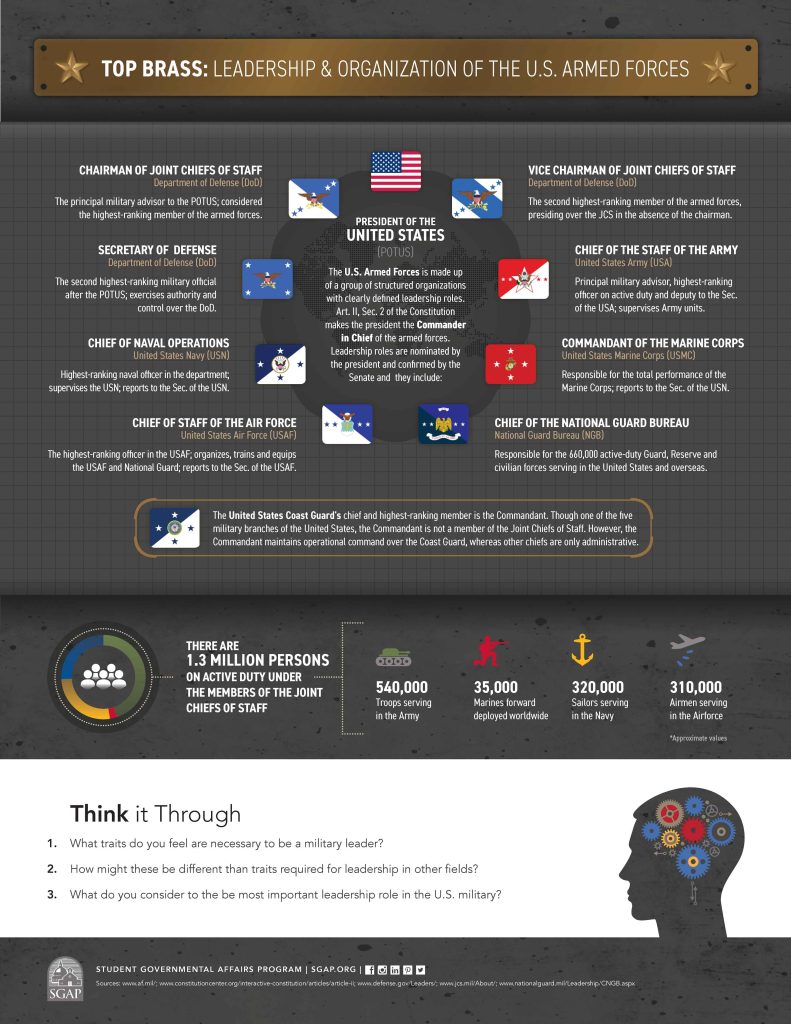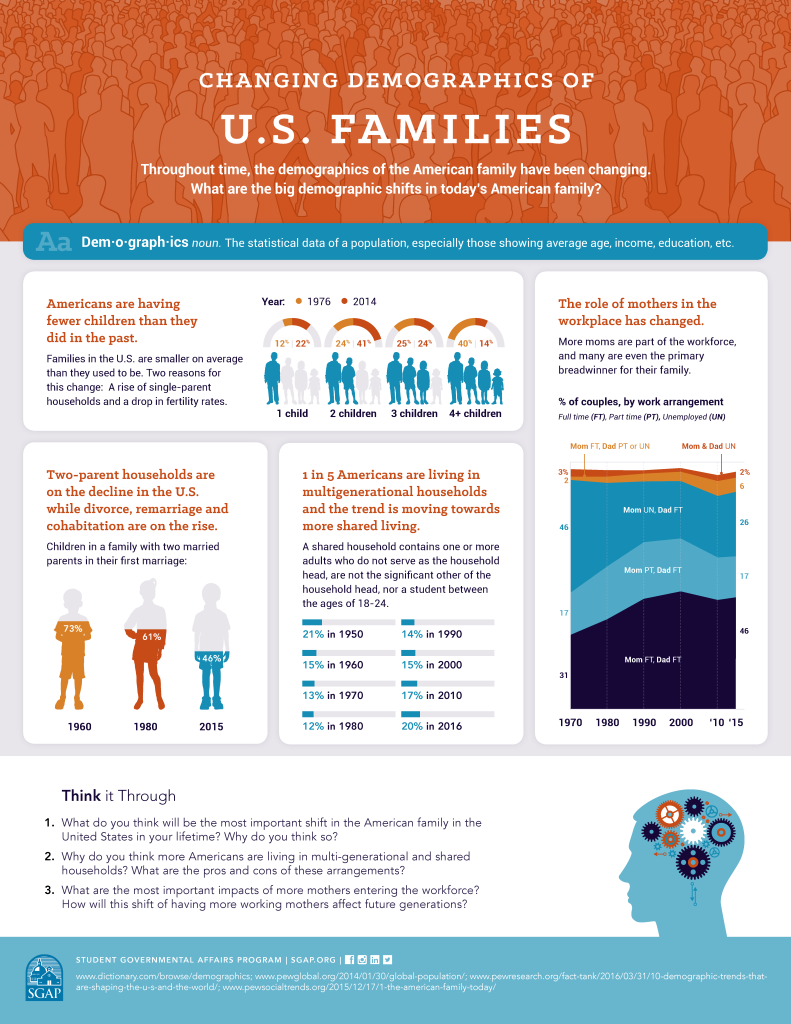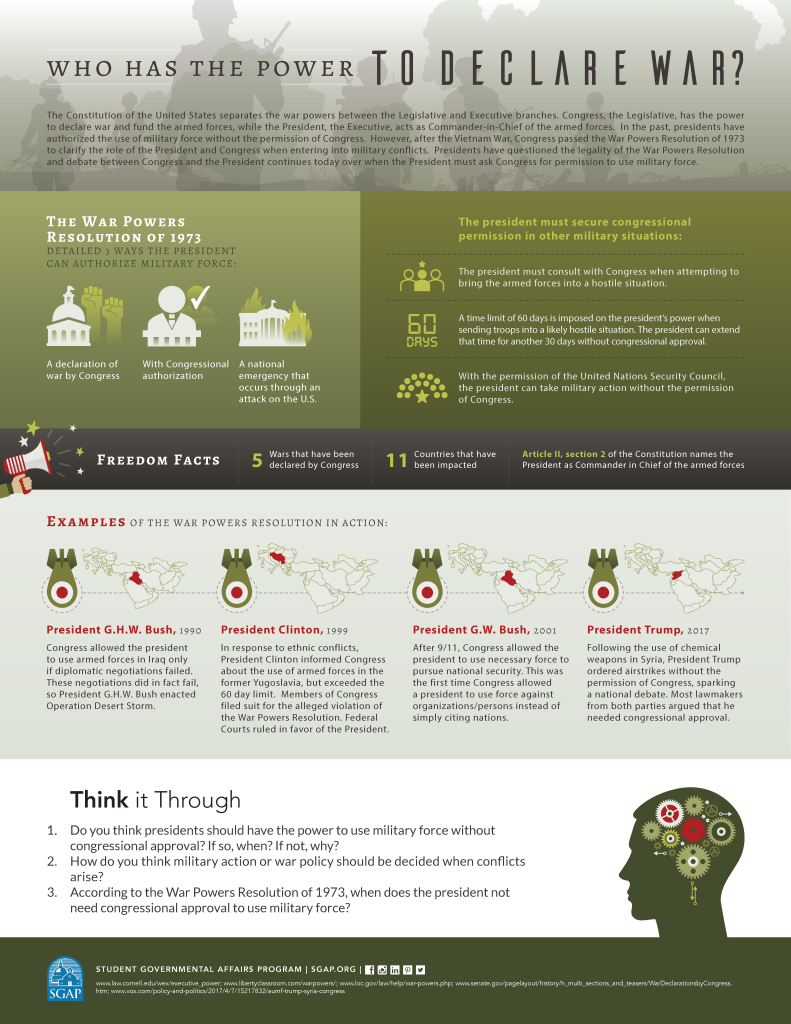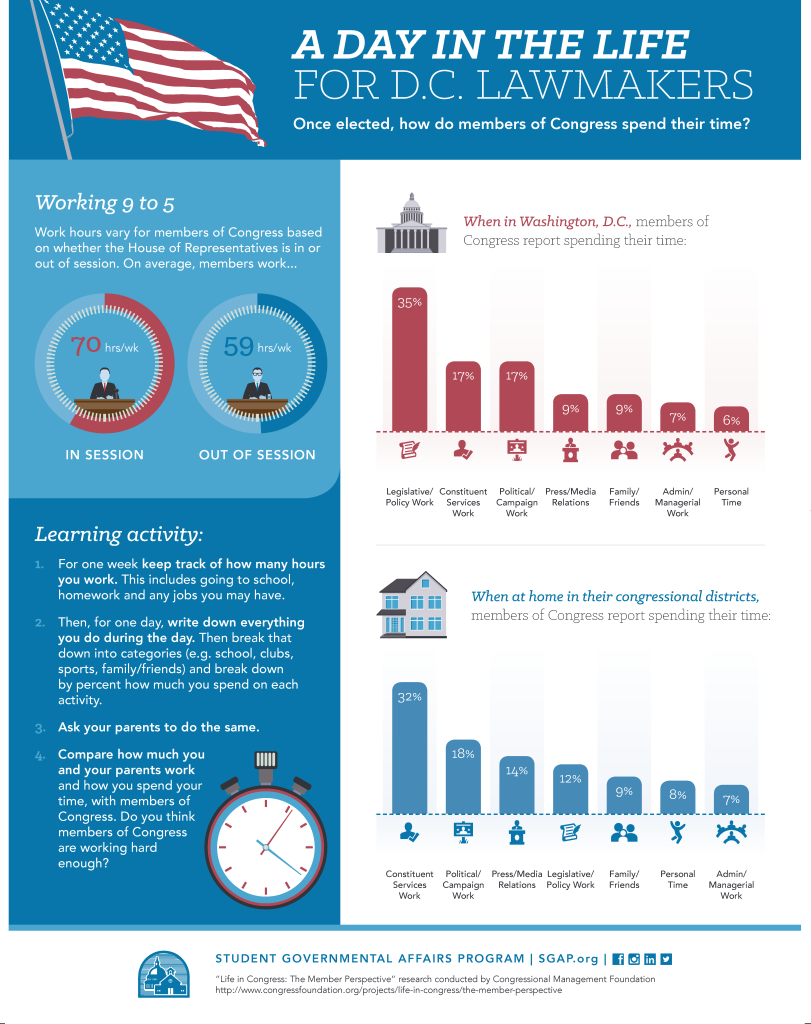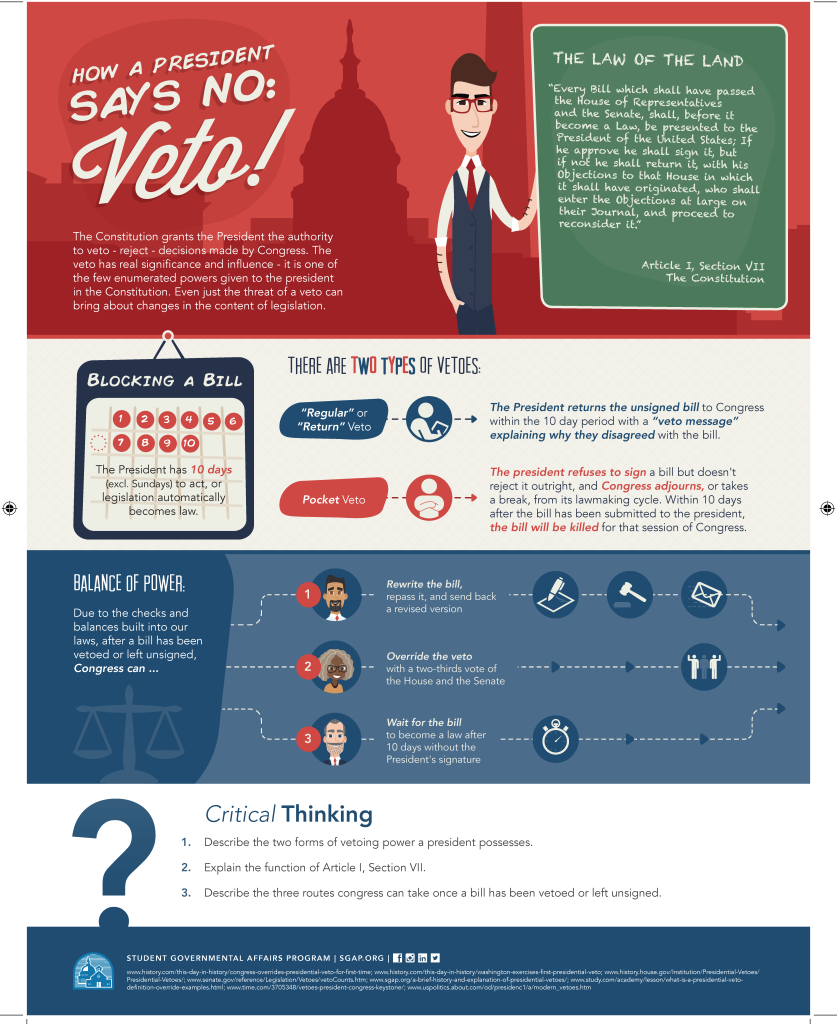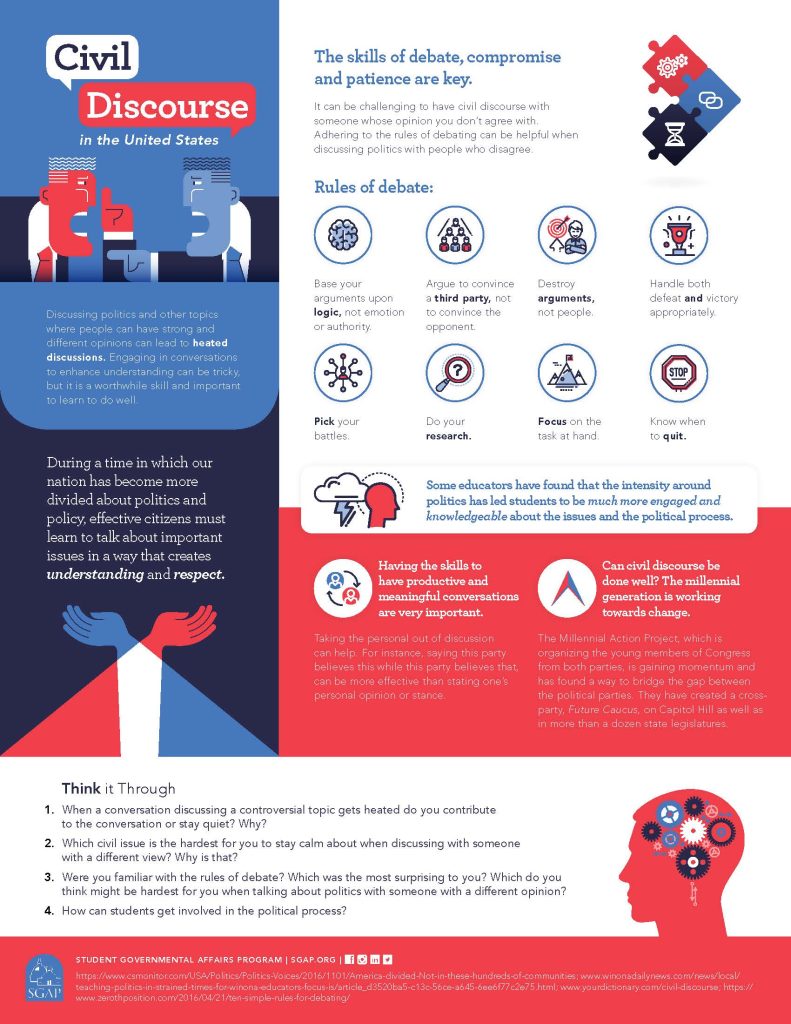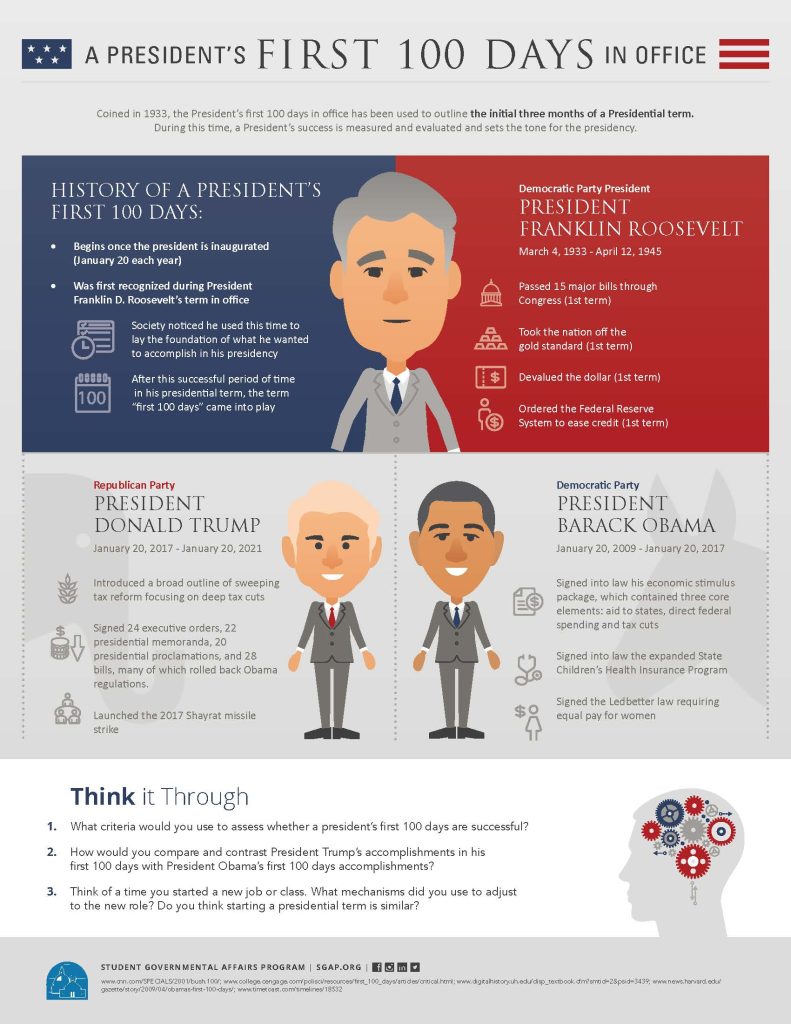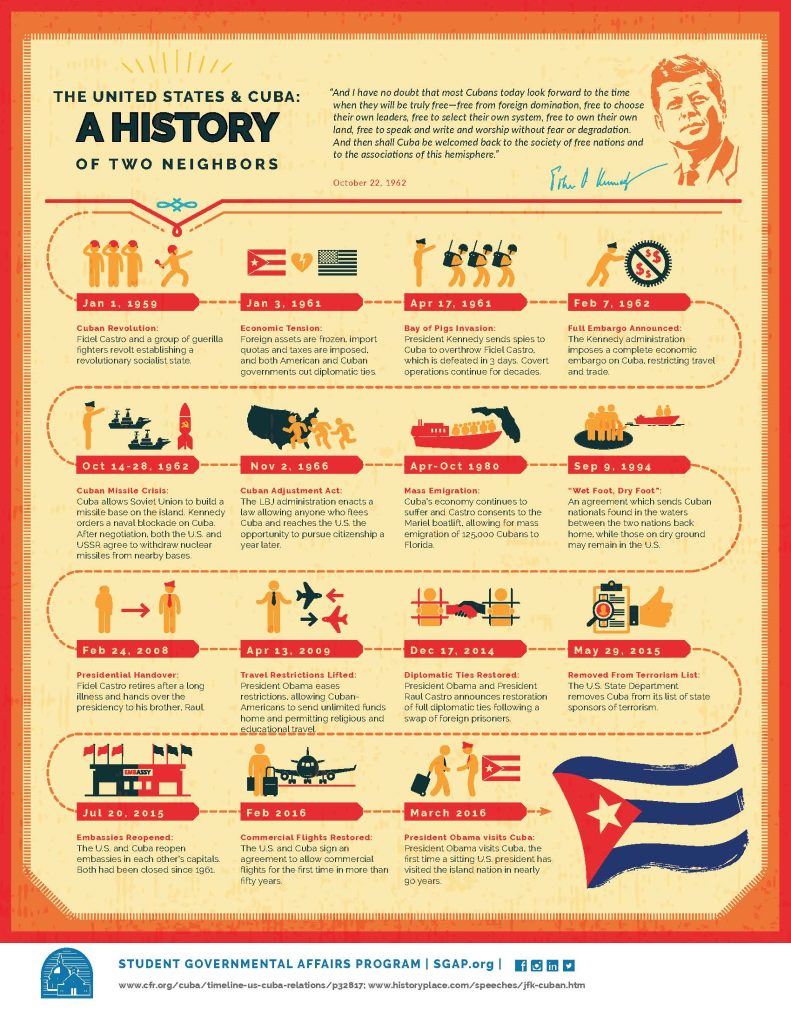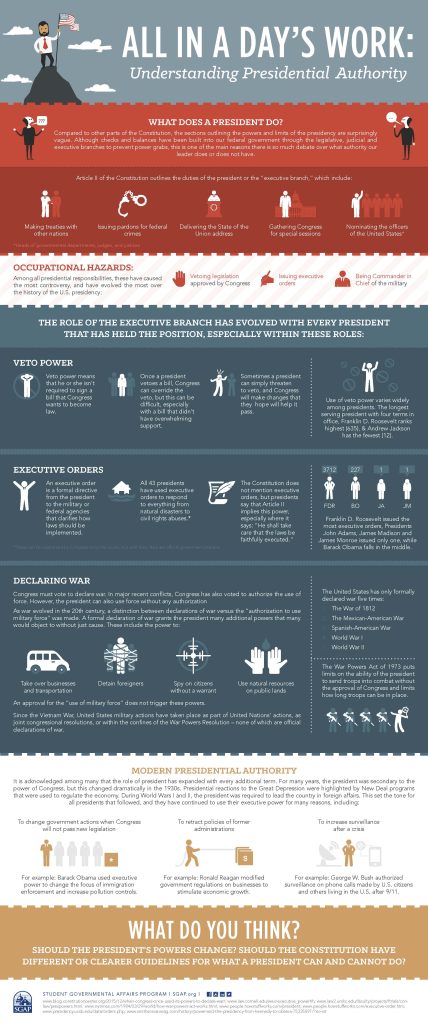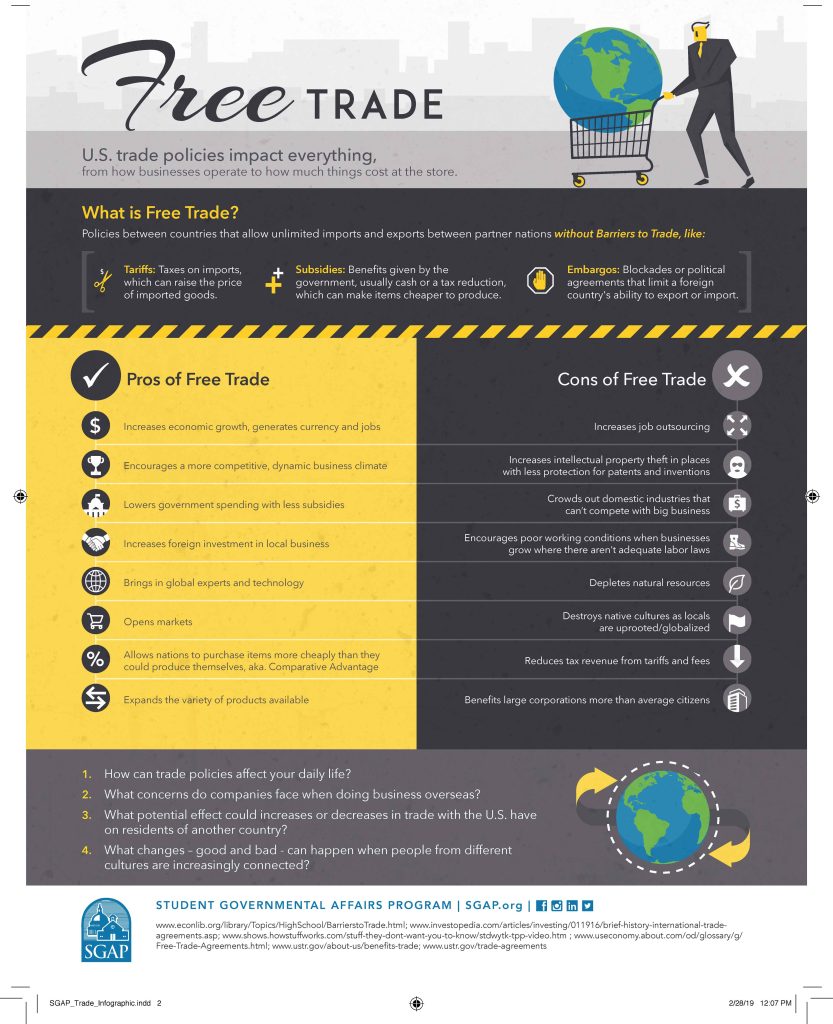Infographic Library
Top Brass: Leadership and Organization of the U.S. Armed Forces
The U.S. Armed Forces is made up of a group of structured organizations with clearly defined leadership roles. Art. II, Sec. 2 of the Constitution makes the president the Commander in Chief of the armed forces. Leadership roles are nominated by the president and confirmed by the Senate.
Changing Demographics of U.S. Families
Throughout time, the demographics of the American family have been changing. What are the big demographic shifts in today’s American family?
Who Has the Power to Declare War?
The Constitution of the United States separates the war powers between the Legislative and Executive branches. Congress, the Legislative, has the power to declare war and fund the armed forces, while the President, the Executive, acts as Commander-in-Chief of the armed forces. In the past, presidents have authorized the use of military force without the permission of Congress. However, after the Vietnam War, Congress passed the War Powers Resolution of 1973 to clarify the role of the President and Congress when entering into military conflicts. Presidents
A Day in the Life for D.C. Lawmakers
Once elected, how do members of Congress spend their time? Work hours vary for members of Congress based on whether the House of Representatives is in or out of session.
How a President Says No: VETO!
The Constitution grants the President the authority to veto - reject - decisions made by Congress. The veto has real significance and influence - it is one of the few enumerated powers given to the president in the Constitution. Even just the threat of a veto can bring about changes in the content of legislation.
Civil Discourse in the United States
Discussing politics and other topics where people can have strong and different opinions can lead to heated discussions. Engaging in conversations to enhance understanding can be tricky, but it is a worthwhile skill and important to learn to do well.
A President’s First 100 Days in Office
Coined in 1933, the President’s first 100 days in office has been used to outline the initial three months of a Presidential term. During this time, a President’s success is measured and evaluated and sets the tone for the presidency.
The United States & Cuba: A History of Two Neighbors
“And I have no doubt that most Cubans today look forward to the time when they will be truly free—free from foreign domination, free to choose their own leaders, free to select their own system, free to own their own land, free to speak and write and worship without fear or degradation. And then shall Cuba be welcomed back to the society of free nations and to the associations of this hemisphere.”
- John F. Kennedy, October 22, 1962
All in a Day’s Work: Understanding Presidential Authority
WHAT DOES A PRESIDENT DO? Compared to other parts of the Constitution, the sections outlining the powers and limits of the presidency are surprisingly vague. Although checks and balances have been built into our federal government through the legislative, judicial and executive branches to prevent power grabs, this is one of the main reasons there is so much debate over what authority our leader does or does not have.
Free Trade: What is free trade?
U.S. trade policies impact everything, from how businesses operate to how much things cost at the store.


